There are many possible causes for white tongue, and in some cases, it comes with an unpleasant odor and mouth dryness. To get rid of it, sometimes you just need to brush your teeth. But what should you do if that doesn’t help?
❗ This article is for informative purposes only and can’t replace the advice of a specialist.
What white tongue is
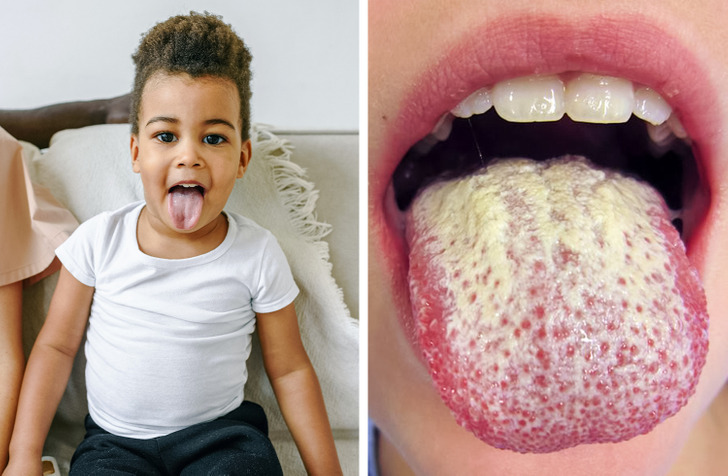
The white film may cover the entire tongue, part of it, or appear as spots. At the same time, an unpleasant odor and taste in the mouth may appear. It looks as if there are small white hairs on the tongue’s surface. In fact, they are buds covered with organic particles, bacteria, and dead cells.
White plaque on the tongue (which can also be yellow) may appear for different reasons, like due to irritation or because of an infection. It usually disappears after several days. If the situation doesn’t change for several weeks, and it’s painful to eat and talk, it’s best to see a doctor.
It’s important to note that the plaque may not only be white. While a pink tongue is normal, a brown tongue means the person drinks too much coffee or tea. A yellow tongue means there’s something wrong with the liver, and a red tongue is a sign that the person lacks vitamin B.
Why the tongue becomes white
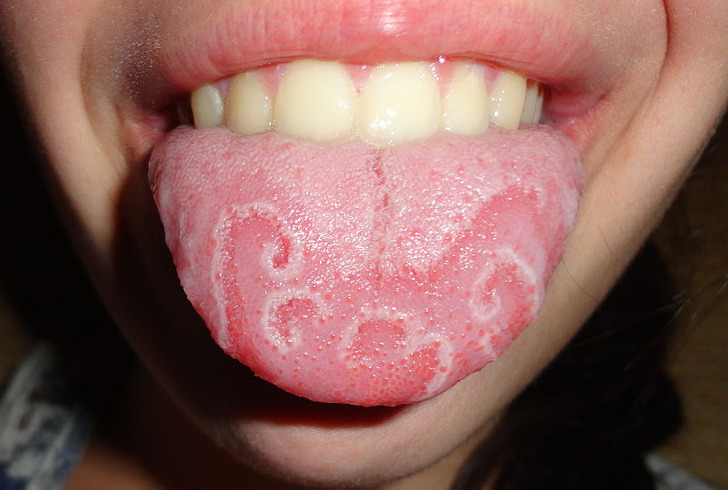
Usually, the tongue becomes white due to bacteria, leftover bits of food, or dead cells that get stuck in between the buds. Because of this, the buds may increase in size or become inflamed. This is how white spots on the tongue’s surface appear.
Sometimes, the plaque appears due to an illness. For example, the geographic tongue is also a condition where white spots appear on the tongue. It’s quite rare, and the causes are unknown, but the condition itself is often connected to eating foods that irritate the tongue. It may also be a reaction to stress, an illness, or hormonal changes.
Why white plaque appears on the tongue
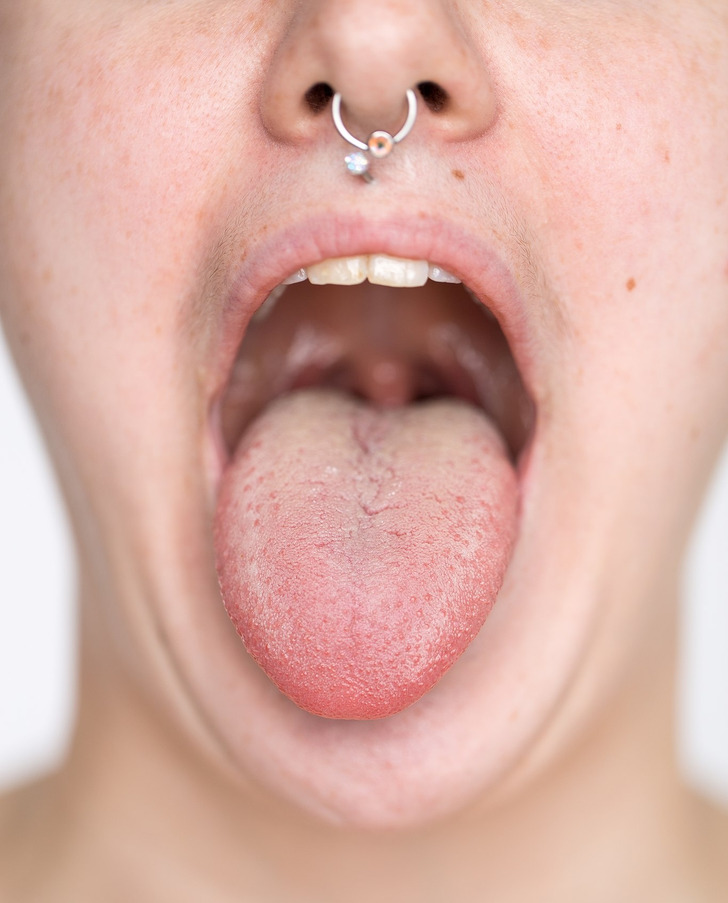
There are some things that make the appearance of white plaque on the tongue more probable:
- Age
- Taking antibiotics (white-yellow plaque appearing when there’s a fungal infection in the mouth)
- A diet that’s lacking enough fruits, vegetables, vitamin B12, and iron
- A weak immune system
- Bad mouth hygiene
- Dental prosthetics or other objects that can damage the tongue
- Dehydration and mouth dryness
What piercings have to do with white tongue
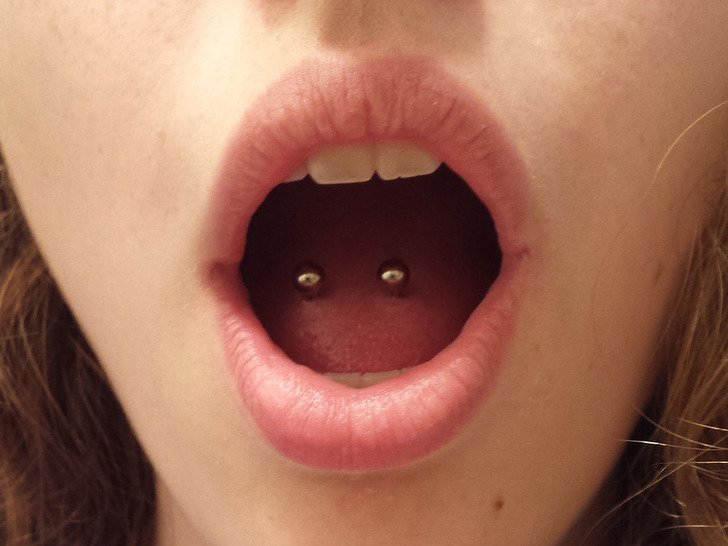
Right after piercing the tongue, there might be some white film present. This happens because the number of bacteria on the tongue increases, and it’s normal. Antibacterial mouthwash will help you get rid of it. Plus, there might be a ring around the piercings, which is normal too, and it means the tissue is healing.
If the plaque appears due to an injury (including piercings), the healing should take around 1.5 weeks. You should avoid irritants, such as hot, spicy, or sour foods and drinks.
How to get rid of white tongue at home
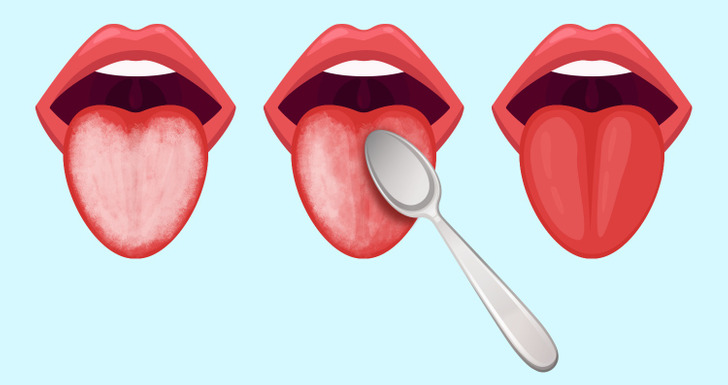
- Practice good mouth hygiene.
- Drink enough water.
- Brush your teeth using a soft toothbrush.
- Use a mild fluoride toothpaste — one that doesn’t contain sodium lauryl sulfate.
- Use fluoride mouthwash.
- Brush your tongue or use a tongue scraper to remove the white coating.
- Drink cold drinks through a straw.
- Avoid food and drinks that are spicy, salty, acidic, or very hot in temperature.
Who to talk to if you’re worried about your white tongue
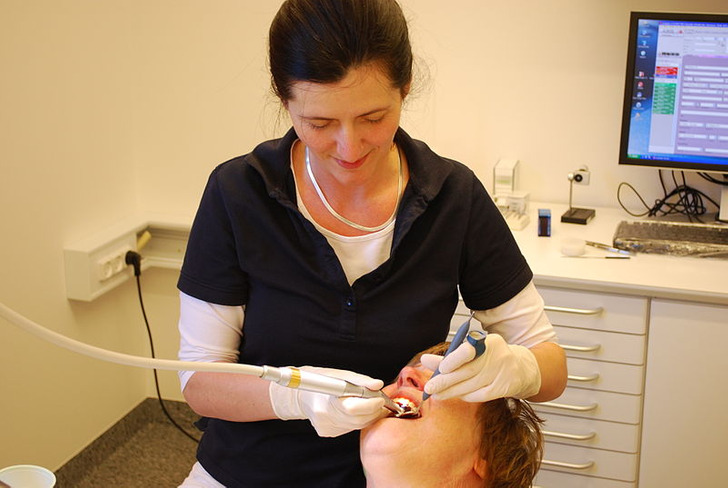
- Your dentist can help you remove the white film from the tongue and prescribe medications if needed.
- Your GP can diagnose the tongue, prescribe you certain medications and determine if the white tongue is an indicator of a more serious issue.
What do you do about white tongue?
Preview photo credit Genusfotografen (genusfotografen.se) & Wikimedia Sverige (wikimedia.se) / Wikimedia Commons, CC BY-SA 4.0, Martanopue / Wikimedia Commons, CC BY-SA 3.0
The poor dog is in critical condition and is left outside the hospital like a bag of bones


Ellie was a dog like no other. He had an energy and zest for life that was contagious to all who met him. But it wasn’t always that way. Ellie had a rough start to life that left him in a critical situation in front of a hospital. He was emaciated, just like a bag of bones, and he looked as though he had given up on life.

But then something miraculous happened. One day, a group of animal lovers were passing by and noticed Ellie lying there. They could see he was in a critical condition and decided to take him in. They brought him to a nearby vet, examined him, and determined that he had been severely neglected. He was dehydrated, malnourished, and suffering from a number of health problems.

Despite his difficult condition, Ellie’s spirit was still strong. He was a fighter and refused to give up. The vets and animal lovers who had taken him were amazed at his resilience, and they knew that they had to do everything in their power to help him. Over the next several weeks, Ellie received round-the-clock care from a team of dedicated animal lovers. They fed him small amounts of food every few hours to help him regain his strength, gave him fluids and medicine to treat his health problems, and spent countless hours with him providing him with love and attention that he had never received before.

As Ellie began to recover, his personality began to shine through. He was playful, energetic, and loving. He had a zest for life that was infectious, and everyone who met him fell in love with him. Word began to spread, and people from all over the world began to follow his journey on social media.

Despite his newfound fame, Ellie was quite humble and grateful. He knew that he had been given a second chance at life, and he was determined to make the most of it. He began to work with the local animal rescues to help other dogs in need, and he became an ambassador for animal welfare. As Ellie’s story continued to spread, he became a symbol of hope for animals everywhere. People who had never considered adopting a dog before began to change their mind after hearing his story.

Ellie’s journey is a reminder of the resilience of animals and the transformative power of love and care. It’s a testament to the incredible impact that a group of dedicated individuals can make on the life of a neglected and abused animal. Ellie’s story is an inspiration to us all, and we should strive to be more like him, to be fighters and never give up, to be humble and grateful, and to use our experiences to help others in need.
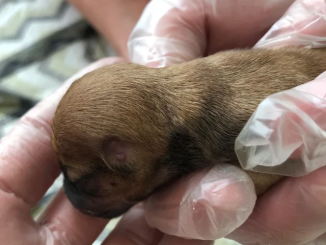


Leave a Reply